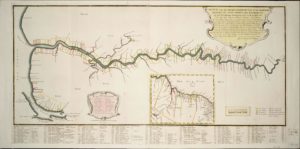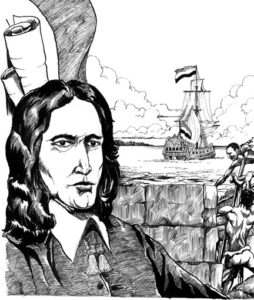
Laurens Storm van Gravesande [regarded as “the doughty founder of the Colony of Demerary, the Dutch Commander-General of the Two Rivers”]made the decision that agricultural development should move towards Demerara. The fertility of the soil and the depth of the river helped him to make this decision.
From 1746, Gravesande began to grant land on the banks of the Demerara River for sugar cultivation and within two years there were 18 plantations which were established. Settlements were growing at such a rapid pace that Gravesande recommended to the directors of the Zeeland Chamber that a separate commander for the Demerara River should be appointed.




